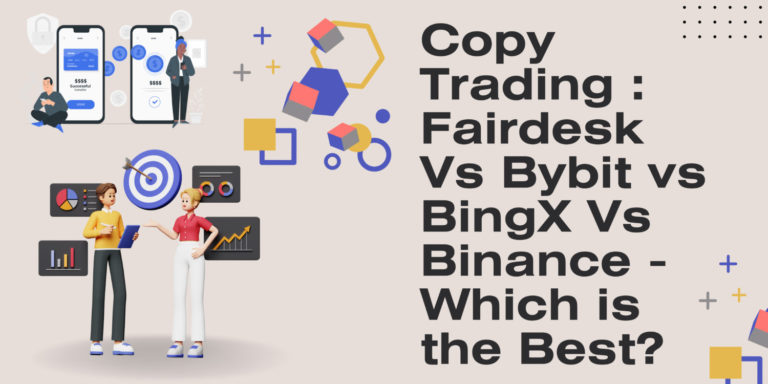Are you finding yourself leaning more and more into crypto for everyday online transactions? Whether you’re streaming content or playing to beat the dealer in online blackjack games, the question of which crypto to use has become more important than ever.
For years, Bitcoin has dominated the space—being the go-to digital currency to pay for everything from your daily coffee to luxury cars. Altcoins have done their best to usurp BTC from its throne, but let’s be honest, their utility has always been better suited to smart contracts, dApps, and supply change management.
Then, along came stablecoins and suddenly, a world of choice has opened up.
But how do you choose the right tool for the job, especially when Bitcoin and stablecoins play very different roles? We think it’s about time to break this down…
Bitcoin—The OG Decentralized Currency
As the first-ever crypto, Bitcoin is a pioneer in the decentralized currency space. Launched in 2009, by the enigmatic (and still anonymous) Satoshi Nakamoto, BTC was built as a future-proof alternative to fiat currencies. Widely considered to be digital gold, Bitcoin is typically classed in the personal finance realm as a store of value rather than a spend-it-every-day type of currency. But those of us in the know know better…
Use Case: Using Bitcoin to Play Online Blackjack
Okay, let’s look at an example…
Say you’re heading to an online casino to play a few hands of blackjack. You’re definitely not interested in the traditional banking methods on offer, given that it can take days to withdraw your winnings—not to mention the higher cost of transaction fees. So, you opt to play blackjack with Bitcoin on mbitcasino instead.
That’s a wise choice! Why? Because Bitcoin smashes through those roadblocks that can mar your online gaming experience.
For starters, BTC deposits and withdrawals are typically faster and cheaper than traditional methods. Instead of waiting several working days for a bank to release your winnings, you can generally expect a BTC-supported casino platform to process your payouts within hours (max!). Processing fees are lower too, meaning you get to keep more of your bankroll when you play Blackjack with Bitcoin.
There’s also the added benefit of privacy. You’re not linking to your bank account or handing over sensitive card information. And let’s not ignore the upside of Bitcoin’s volatility: if the coin rises in value after your win, your pot could increase just by sitting in your digital wallet. Try getting that with dollars and pounds!
Are Stablecoins The Best for Digital Payments?
It’s easy to lump them into the altcoin category, but stablecoins are actually a digital asset class all of their own. Originally developed to quash volatility spikes in DeFi and crypto-trading systems, these alternative coins have quickly become one of the most practical tools for sending and receiving financial transfers in the entire crypto ecosystem.
Why? Because they’re pegged to real-world currencies.
The stablecoin landscape consists of a few major players. Tether (USDT) is the most widely used, followed closely by USD Coin (USDC) and Binance USD (BUSD). These three are pegged to the US dollar and backed—at least in theory—by reserves.
Designed to maintain a steady value—we’re talking $1 in, $1 out—stablecoins are, well, stable! But are they decentralized? Technically, no, since USDT and its pals are issued by centralized entities. Some decentralized stablecoins do exist, but whether or not that’s a good thing depends on which side of the over-collateralization discussion you land on.
Use Case: Managing Monthly Spending with Stablecoins
Say you want to get smarter about your monthly budget—we’re talking finally taking control of those subscriptions and bills, and leaving room for the occasional splurge. Stablecoins can help you set super-clear boundaries here… And how do you do that? By converting a set amount of crypto or fiat into stablecoins at the beginning of the month.
Because stablecoins like USDC maintain a steady 1:1 value with the dollar, you won’t have to deal with the volatility swings found in the broader crypto market. Instead, you can allocate and manage your spendable amount without risking a daily loss in value. It’s a neat way to ringfence your finances; whether that’s allocating budgets for groceries and bills from your salary, or “fun” money from your crypto wallet.
Finding Balance in a Multi-Crypto World
If you’re already (or looking to start) using crypto regularly, chances are you’ll need more than one currency in your toolkit. Bitcoin and stablecoins don’t have to be in competition—when used strategically, they can complement each other.
One delivers maximum decentralization and long-term potential, while the other offers you price consistency and ease of use. The smartest move you can make? Start thinking about them as two sides of the same coin when it comes to digital spending.
Ultimately, this is about evolving your money management habits and making smart, purpose-driven choices. Knowing when to reach for each currency—be that funding a gaming session or paying for a VPN subscription—and how to deploy them, is what will give you the edge.










